The end of a long winter season is once again upon us, and even though the conditions weren't all that conducive to what might be called an excellent winter season, our gear did get periodic use and should be taken care of while hibernating. It's time to start thinking about how you should store your winter gear to reduce the risk of rust, mildew, mold, varmints, and other unseen casualties.
Throughout the winter gear gets wet then dry, wet then dry, and this process continues through the season. The more active your season, the more important it is to take care of the gear that took care of you. While I don't have all of the answers to extend the life of your gear, I can get you started in the habit of good gear care.
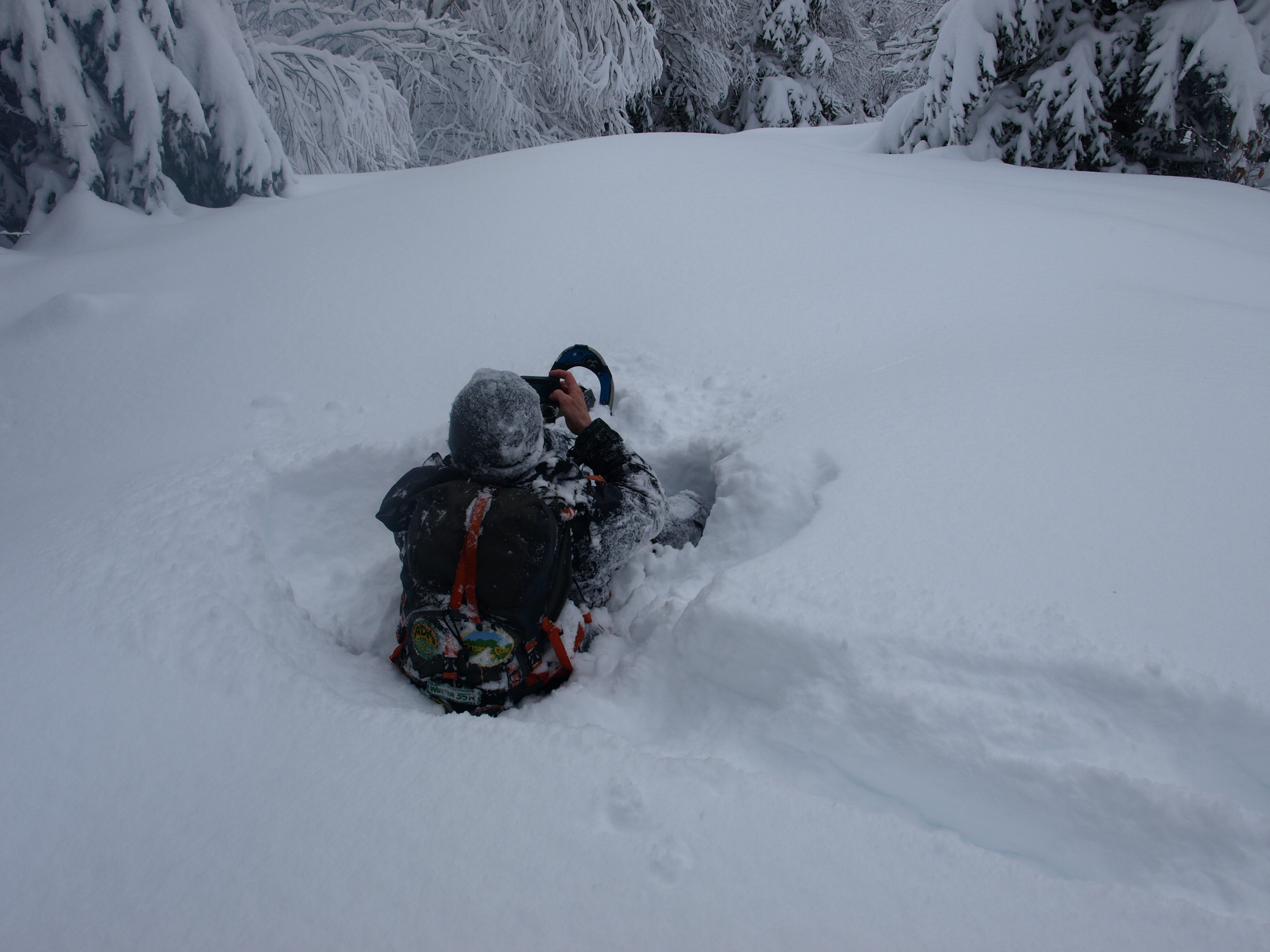
Snowshoes
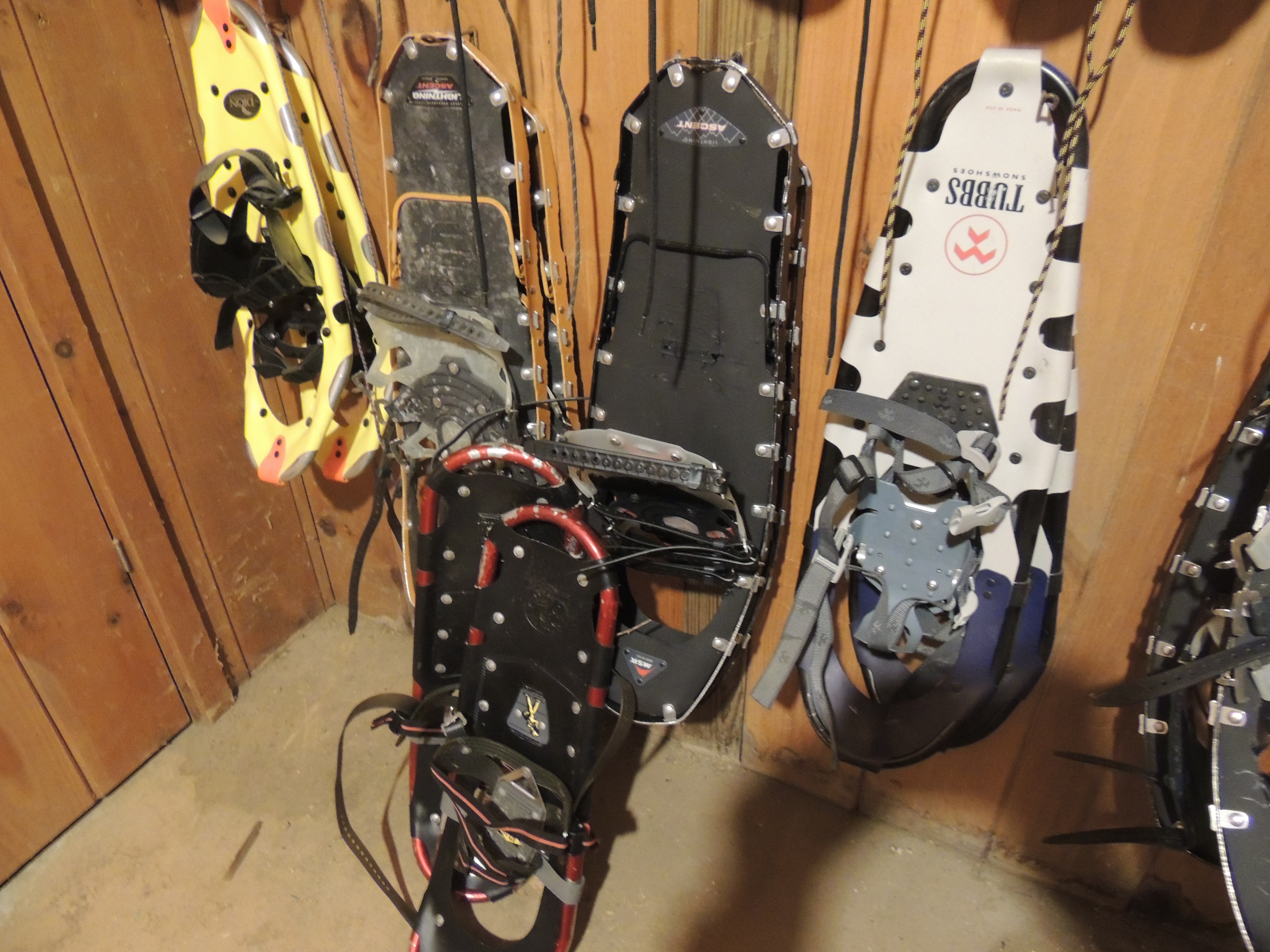
Look over the snowshoes for any possible damage and mark anything you find with a small piece of colorful electrical tape. The off season is the perfect time to send snowshoes out for repairs or to take on the task yourself.
The crampons can be sharpened using a flat file, but do not sharpen them to a point — they just need to be sharp enough to do the job. Use a medium coarseness steel wool to dust off any surface rust and put a very light coating of oil on them using a rag. Hang in a dry place, not in a plastic bag or even in the canvas bag that some come with. Bags will capture moisture and rust could form, or mold could start to grow on the webbing.
Crampons
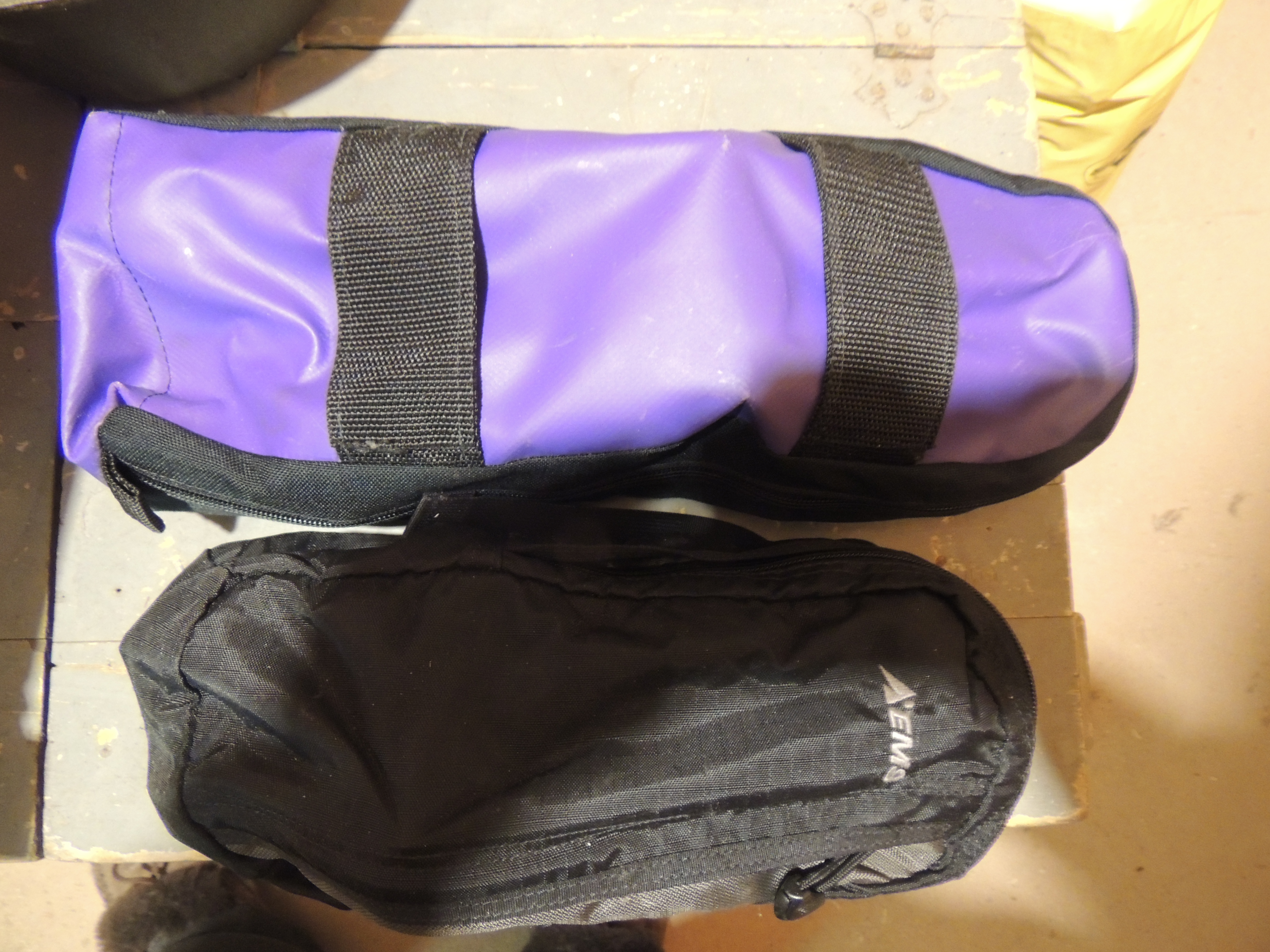
The same applies to snowshoes. Use steel wool to clean off any surface rust that shows up and put a very light coating of oil on them using a rag. Crampons can be sharpened using a flat file but again, do not sharpen them to a point. Sharp points could cause them to break, so just sharpen them enough to do the job you need them to do. Over filing can also break down the hardening of the metals, which also makes them prone to cracking. Store crampons in a dry place, and do not place them in a bag that does not breathe. Some crampons come with bags that are ventilated. Those are fine.
Microspikes
Treat them the same as your snowshoes and crampons. Microspikes don't tend to need sharpening, but they can be sharpened if you feel they have been rounded by Adirondack rock. Microspikes are stainless steel so they should not rust, but it is important to keep them clean. Salt from roadsides and trailheads can break down the rubber, so be sure to give them a good rinsing.
Cross-country Skis
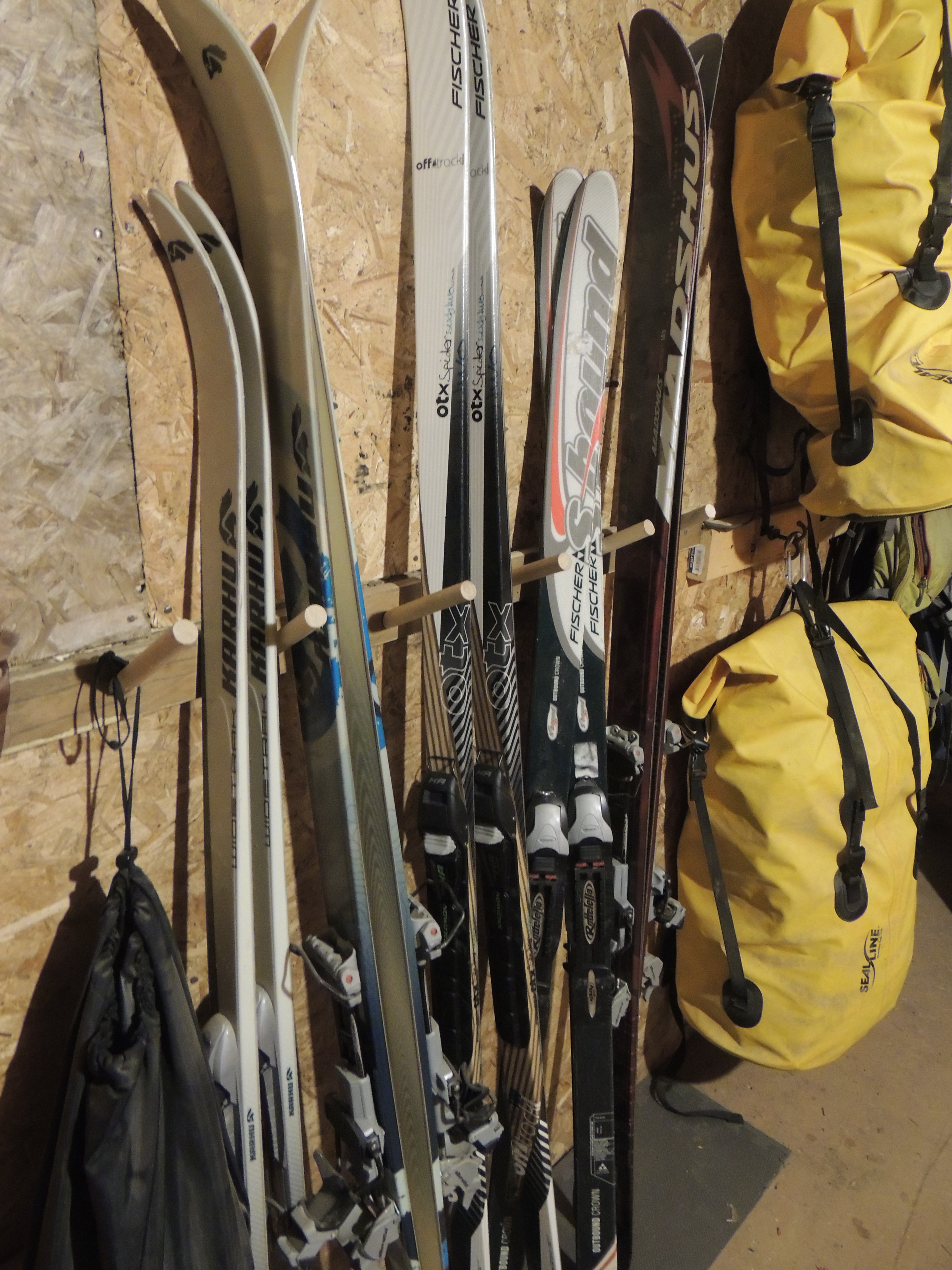
As for your skis, remove any light surface rust on the metal by using a piece of steel wool. If you want your skis tuned for the season, I recommend bringing them to a reputable place to get them serviced. Do this at the end of the season.
Store skis in a dry location. A ski bag works well to protect them from getting banged up. To prevent rust on the metal edges, put a coating of wax on the metal edges to keep them from rusting. The wax will wear off during the first use of the next season.
Poles
There is a simple process for pole maintenance. If you have a one-piece pole, there really is no maintenance — just check for damage and replace as needed. If you have a two- or three-section pole, simply take them apart to dry and remove dirt between the sections.
Four-Season Tents
When you return from camping your tent will be wet, and in many cases it'll still be frozen in spots. You should set the tent up inside to let it dry, if you have the space. If space is limited you should at least hang it up. Use the curtain bar in your shower and flip it around so it all gets dry.
Store the tent in its stuff sack, but do not roll the tent. Tents have memory, so if it gets rolled the same way too much it can create a crease and then a weak point for water to invade during the next season. Packing the tent in no particular manner makes it tough to get the entire tent in the stuff sack, but with a bit of practice it can be done. In a couple of cases, especially with winter tents, I have had to purchase a larger stuff sack. Check for tears and damage before storing and get them repaired in the off season so they're ready.
Sleeping Bags
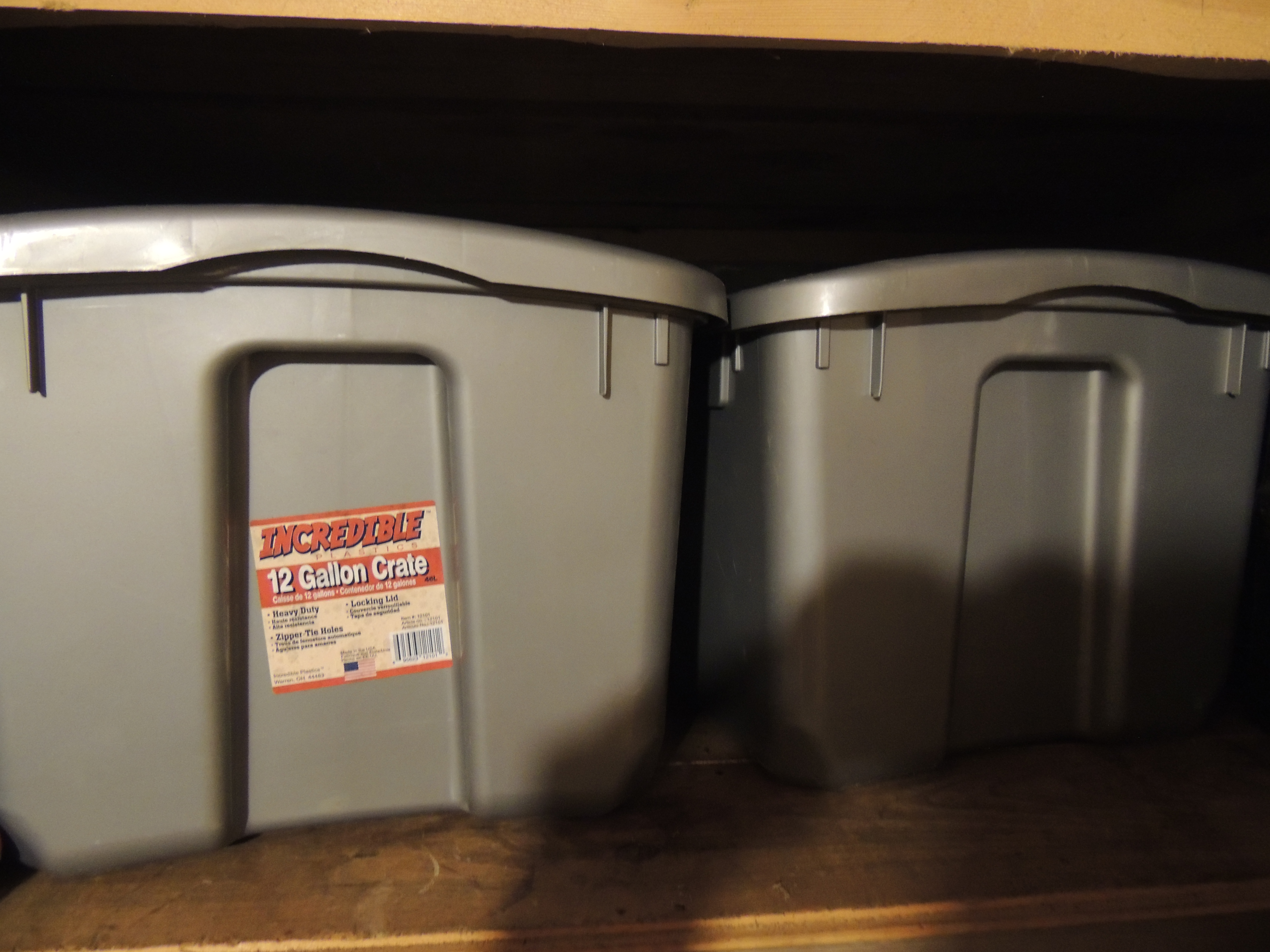
Down sleeping bags and outerwear are the same as down outerwear and should be treated with care. Down should only be washed with a down wash that is free of heavy perfumes or harsh chemicals. Wash down in a front load washing machine to avoid water loading and abrupt movements.
I reccommend using a dryer to dry down. Hanging wet down will make the down bunch up and that is bad. Dry down on a low setting and place a couple of tennis balls in with the piece. The tennis balls will work the down around while it drys and help it spread back out. If you use a shoe rather than a tennis ball, which is common practice since many people don't own tennis balls, be sure it is a non-marking shoe to avoid black marks in your dryer or on your gear.
Synthetic sleeping bags are much easier to clean. They should only be put in a front load washer. Synthetic fillers can also bunch up when washed and should be dried in the same manner as a down sleeping bag.
Storage of all sleeping bags is important and should not be overlooked. All bags should be hung or stored flat if you have the room. I realize this is not an option for many people. You can also store your bags in a large storage sack or laundry bag. The important thing is to not store them compressed for a long period of time. Extended periods of compression can mat the fillers, and over time they lose some of their loft and warmth ratings. Also, rodents love sleeping bags so keep them in a bin or trunk if you can, especially if you are storing them in a basement or garage.
Backpacks
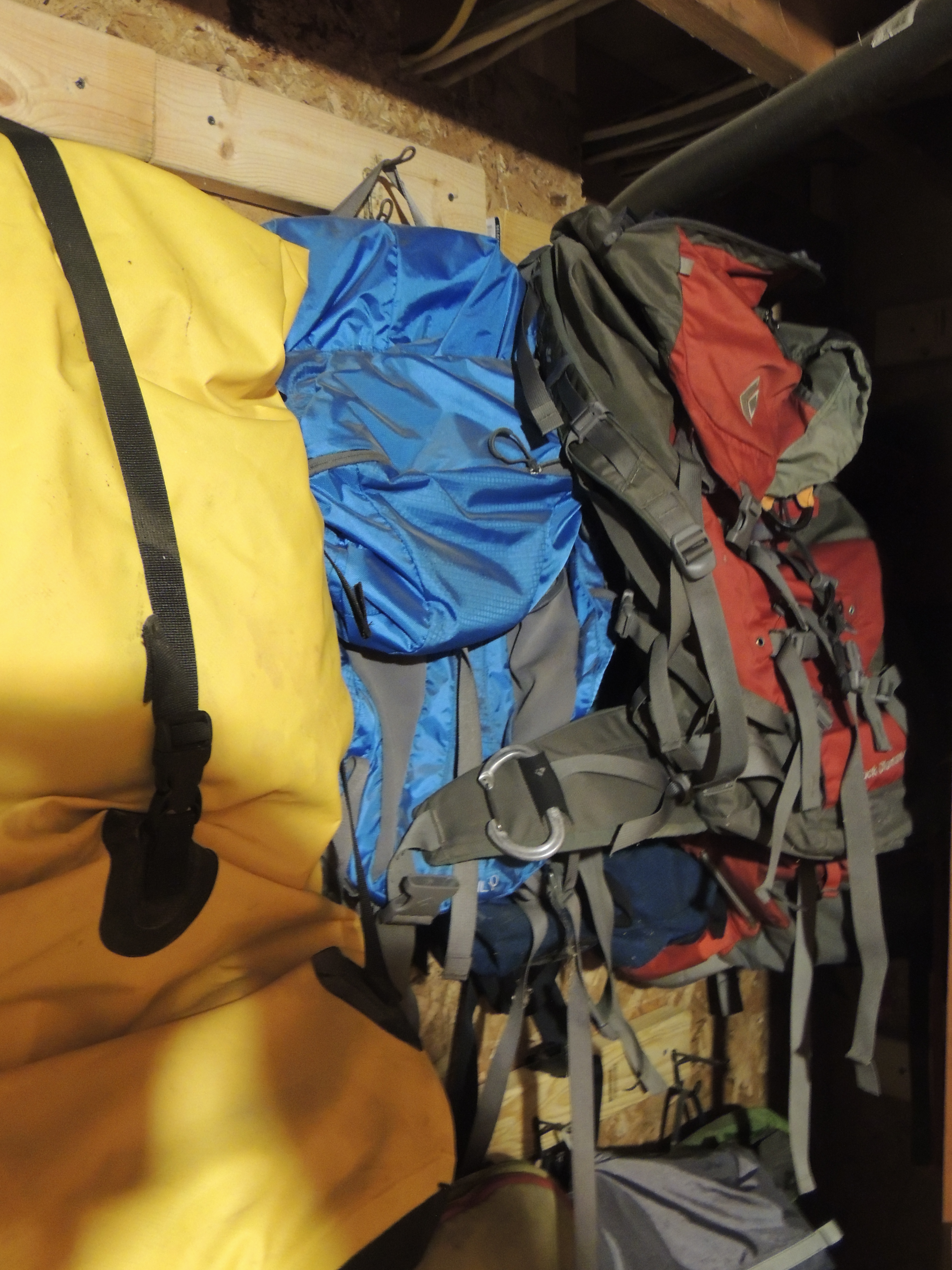
If you are storing one over the summer and breaking out that summer pack, just wipe it clean of heavy dirt and particles and call it good. Dirt adds character to a pack. They can be washed if you wish, but always follow the manufacturer's instructions.
Outerwear
Base layer: Wash in cold water, hang dry, and store for the season. Use a base wash or wool wash for best results.
Fleece: Wash before storage to get any bodily oils and contaminants off. This should be done according to the instructions on the garment. Many brands of fleece like to pill when washed with other materials, especially if the other materials have excessive buttons and buckles. Velcro is not a fleece's best friend and can do more damage to your jacket. Fleece is best washed in a separate load or with other like materials. Hang dry to reduce risk of shrinkage.
Waterproof/breathable: Wash before storage. Body salts and oils can break down the waterproofing over time. It is best to wash these pieces with a detergent designed for this type of clothing. Using regular detergent tends to not rinse off well enough, and over time it will clog the pores of the jacket making it less breathable. Wash with like garments and no more than four pieces at a time. For heavily soiled pieces, be sure to rinse off all excess dirt before putting them in your washing machine.
Drying can be done on a low temperature if needed, but it's typically unnecessary because they tend to dry quickly. Drying on a low temperature has been known to reactivate some of the waterproofing that was manufactured into the material.
Putting waterproofing back into a material can be done with a spray on or by washing the item in a waterproofing product. Use the spray for outerwear that is lined or insulated. Using wash-in waterproofing is perfect for shell jackets or pants. Using wash-in products for insulated pieces can cause the pores to get clogged and in turn lose much of their breathability.
Gaiters, hats, balaclavas, and gloves: Depending on the material, wash with similar items.
Down clothing: Follow the same instructions as above for down sleeping bags.
Boots

Typically with boots, you don't have to do anything for storage except keep them in a place where mice and other rodents can't make a home out of them. If you do wish to wash them, start by brushing off excess dirt as needed and then hand wash.
To dry your boots you need to be a bit more careful. Excessive heat is bad for glued seams and leather. Placing them on or near a heater will dry out the glues, which can cause a shoe to break down much faster. High heat also dries out leather, which can cause sewed seams to break down and the body to crack. It is best to remove the foot bed before you start to dry them to allow adequate air flow. Then you have the option to leave them alone in a dry, warm environment. If you are in a rush you can stuff them with newspaper to soak up the excess moisture. You can also purchase boot stacks that simply move warm, dry air into and around the inside of the boots.
Still have questions? Stop into a local outfitter for details. While you're there be sure to see what kind of care products they have. Want to head out into the backcountry next year to experience an Adirondack winter excursion? See what a local guide service has to offer.
The Adirondacks Spring Into Action this week:
Top tips for 3 cool activities






